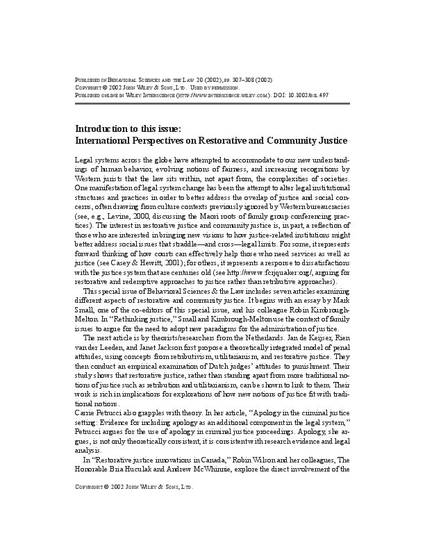
Legal systems across the globe have attempted to accommodate to our new understandings of human behavior, evolving notions of fairness, and increasing recognitions by Western jurists that the law sits within, not apart from, the complexities of societies. One manifestation of legal system change has been the attempt to alter legal institutional structures and practices in order to better address the overlap of justice and social concerns, often drawing from culture contexts previously ignored by Western bureaucracies (see, e.g., Levine, 2000, discussing the Maori roots of family group conferencing practices). The interest in restorative justice and community justice is, in part, a reflection of those who are interested in bringing new visions to how justice-related institutions might better address social issues that straddle—and cross—legal limits. For some, it represents forward thinking of how courts can effectively help those who need services as well as justice (see Casey & Hewitt, 2001); for others, it represents a response to dissatisfactions with the justice system that are centuries old (see http://www:fcrjquaker:org/, arguing for restorative and redemptive approaches to justice rather than retributive approaches).
Available at: http://works.bepress.com/alan_tomkins/18/

PUBLISHED ONLINE IN WILEY INTERSCIENCE (HTTP://WWW.INTERSCIENCE.WILEY.COM ). DOI: 10.1002/BSL.497